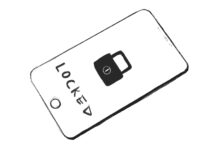Whether you are a patient or an employer providing healthcare benefits, you may feel that the quality of our healthcare delivery system is under threat. But how? Lost amidst concerns about rising healthcare costs, increasingly limited access to healthcare providers, and the ongoing opioid epidemic is a hidden threat to public health that is putting the lives of 77 million people — one in three Americans — at risk. What is it? Lack of basic Health Literacy.
How Widespread Is The Problem Of Health Literacy?
That’s a question that the US Department of Education wanted to find out in their groundbreaking study of the Health Literacy of America’s Adults. More than 19,000 people aged 16 and over were asked questions about common health-related vocabulary, the typical structure of written health materials, and the workings of the healthcare system.
The results were not encouraging.
Based on the sample survey, eight million people in the US would not be able to read the label of a bottle of cough medicine to find out what to do in the case of an overdose.
Similar poor results were found when asking respondents to read an instruction sheet explaining that they need to avoid eating food or drinking liquids starting the night before a diagnostic X-ray procedure.
On average, only 58% could accurately read a chart to find out how many polio vaccine doses a child should have by the time they are seven years old. But among those with only basic or below basic literacy, the results were far worse. Only 22% of respondents with basic literacy skills could answer the vaccine question correctly. Among those with below basic literacy, the percentage of correct answer dropped to just 5%.
What’s the bottom line? When it comes to good health, millions of Americans seem to have lost the plot. Researchers found that one in three of us (77 million people) aren’t able to read or follow necessary instructions to make critical healthcare decisions. According to the survey, only about 12% of us command a level of health literacy that allows us to make informed decisions about our healthcare
How Healthcare Providers Can Help Overcome Healthcare Illiteracy
Today’s healthcare providers face an extraordinary challenge to provide quality healthcare within a system that often leaves them with little time for face-to-face communication with patients.
Yet, the survey of Health Literacy of America’s Adults (mentioned at the beginning of this article) reveals that many patients, particularly those with basic or below basic literacy, rely heavily on verbal or visual communication to receive their medical information. In other words, traditional written materials, such as disease guides, are not that effective for a large population of patients. Face-to-face time (or telephone consultations) is better at communicating important healthcare information, such as treatment plans.
That’s once why the federal Agency for Health Research and Quality created their Universal Precautions Toolkit to help primary care providers communicate more effectively with their patients at different health literacy levels.
Here Are Some Other Important Ways That Healthcare Providers Can Help Bridge The Healthcare Literacy Gap:
- Use more pictures and graphics to illustrate medical conditions and courses of treatment. Simplify your forms, informed consent, and brochures to make them understandable for those with limited literacy.
- Ask open-ended questions instead of closed questions that may unnecessarily influence patient answers.
- Avoid using multi-part questions, which can confuse patients. Ask each question separately.
- Avoid medical jargon. Patients may be too embarrassed or shy to ask what scientific terms mean.
- Ask patients to bring their medications with them during their visit.
- Have a plan to connect patients requiring complex treatment plans (such as newly diagnosed diabetes patients) or non-compliant/non-adherent patients with case managers/social workers who can help with lifestyle changes, medication compliance, better nutrition skills, as well as other community resources.
- Be persistent but non-judgmental to earn the trust of your patients. Explain how information given during the visit is kept strictly confidential.
- Make sure that the patient is clear on the diagnosis and the next steps for their course of treatment. Have them repeat all instructions back to you in their own words.
- Offer more telephone access or video conferencing for patient follow-up.
Pharmaceutical Manufacturers Are Taking Steps To Make Drug Labeling And Packaging Instructions Clearer To Reduce Prescription Errors
Patients with below average health literacy are not the only ones who can misread confusing drug labels. Even medical professionals can make life-threatening errors, as in the high-profile case of Hollywood actor Dennis Quaid, whose twin newborn children were accidentally given 10,000 units of the blood thinner Heparin when only 10 units were called for. (Fortunately, the children did recover.) A lawsuit brought by Quaid asserted that the packaging of the higher dose bottle was too similar to the low dosage one, which contributed to the error.
In the years since the Quaid case, the Institute of Medicine (IOM) at the National Academy of Sciences has worked with the U.S. Pharmacopeial Convention (USP) to improve the readability of drug labels to make them easier to understand and reduce the chances of medical errors.
The new USP labeling standards are designed to be more “patient-centric.” For example, instead of saying “take one 2x per day”, the revised standard calls for more straightforward instructions, such as “Take one pill in the morning and one pill in the evening.” The new requirements also require that labels should be easier to understand for those with limited English language skills, and the requirement for standardized, high-contrast black and white labels with larger fonts also make the labels more legible for those with reduced sight capabilities.
This article discusses possible solutions to the health literacy issue at hand. The proposed solutions are all a great base for our team to start our concept development with. However, I think there are solutions and designs that can be more substantial than some of these suggested. One of the most important takeaways I found from this article is the importance of visuals and face-to-face time with health professionals.





I shared the same feelings, the developed solutions appear to hold value and lead to a better line of communication and understanding, however there is only so much that changing the jargon, reminding a patient to bring their medication, or adding pictures can do when wanting to inform an individual about personal health. I think, as well there can be solutions or ideas to be further pushed with the initial concepts serving as a bass line, innovate!